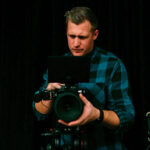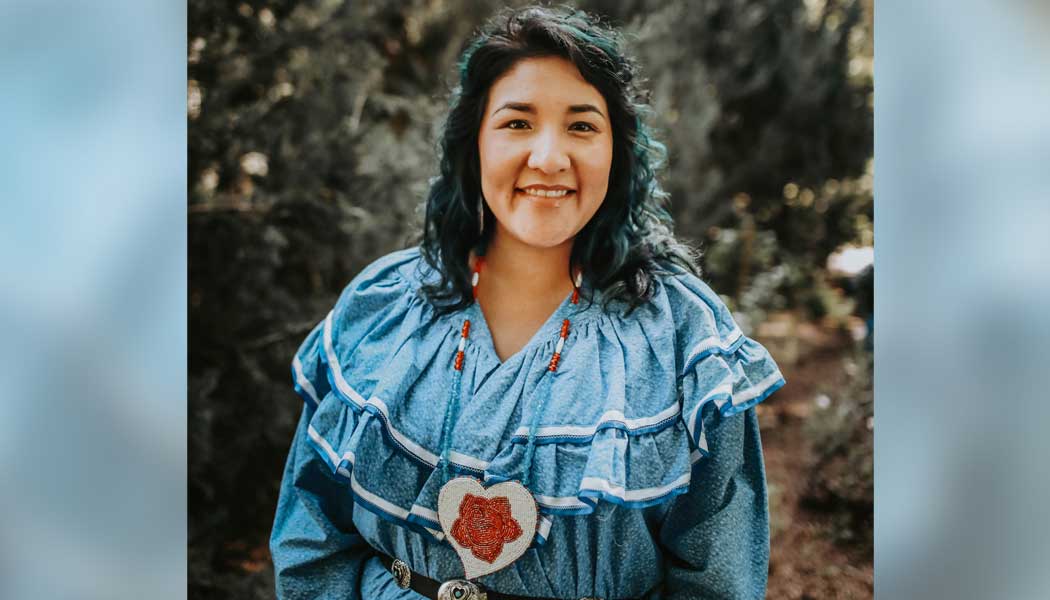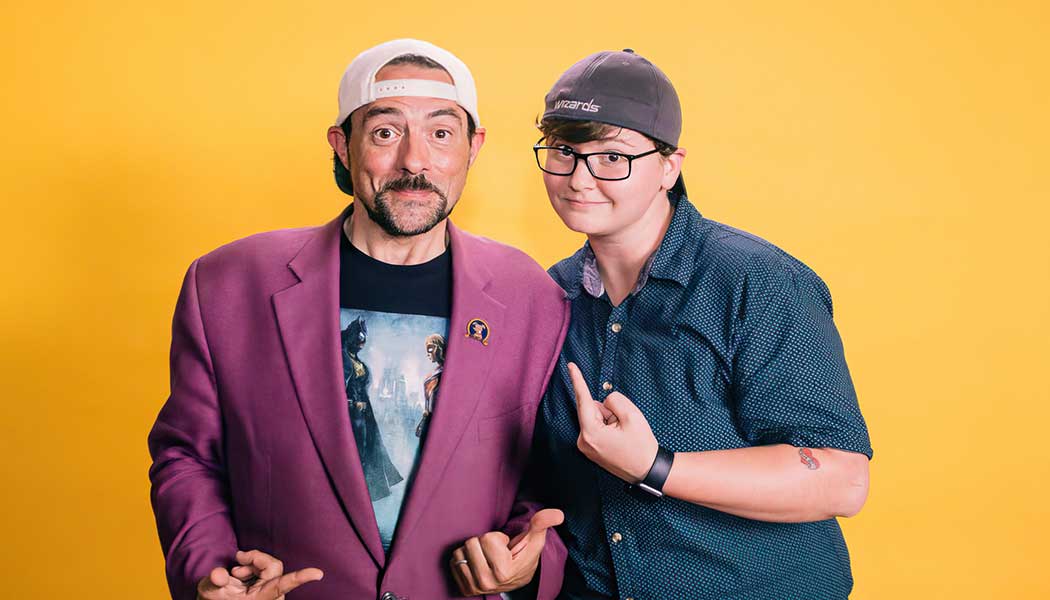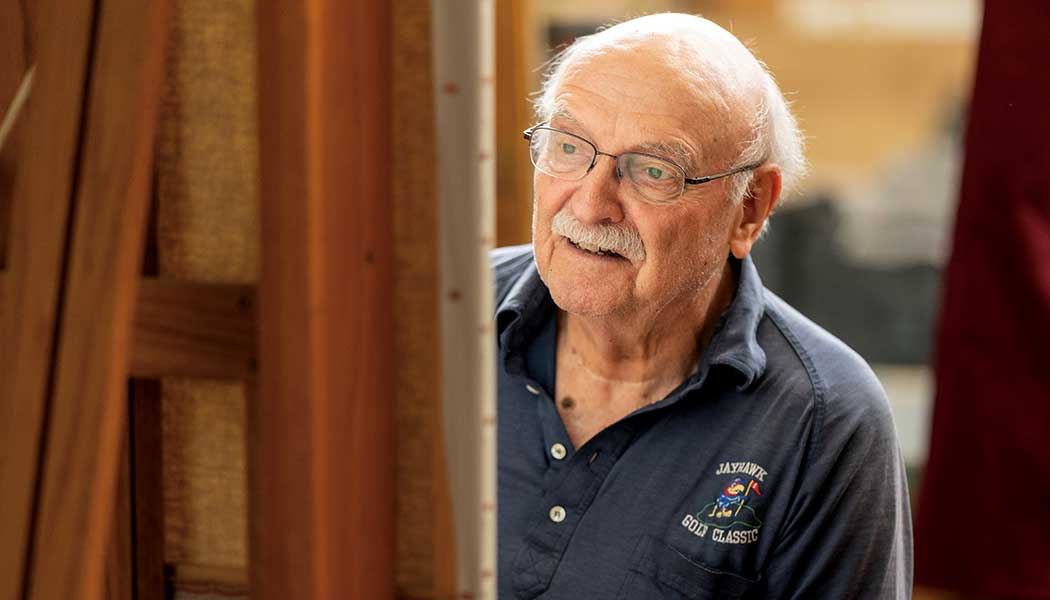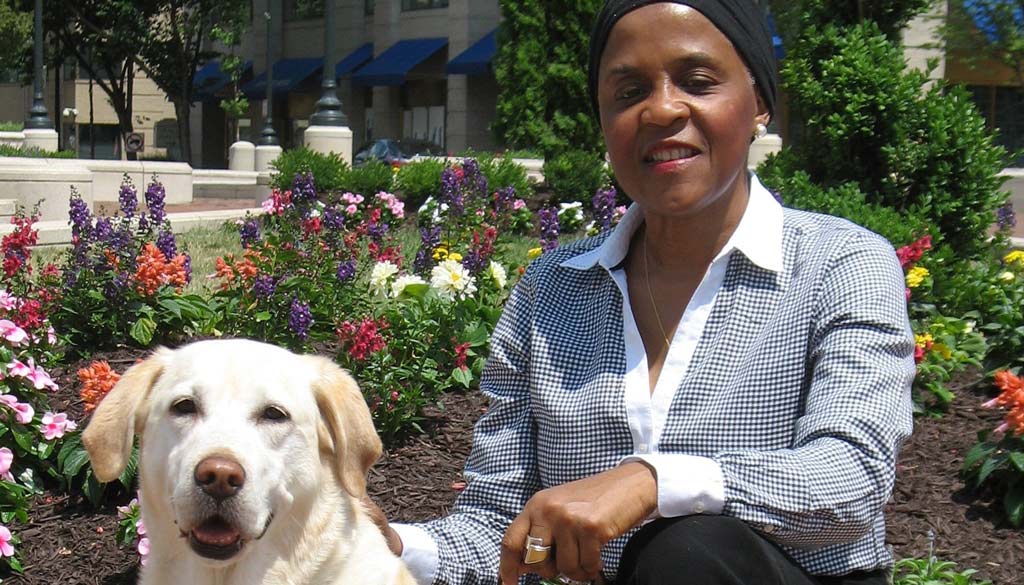Conservator masters art and craft of book restoration
Noah Smutz
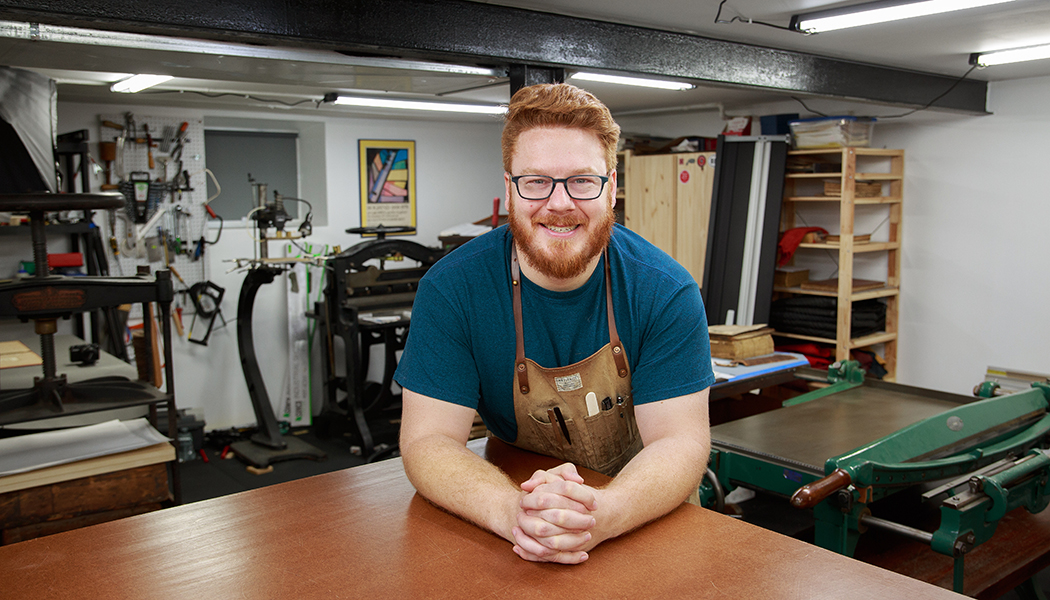
A client who brings Noah Smutz a crumbling Bible that lists births and deaths and marriages is handing him more than a book; she’s turning over a cherished heirloom that tells a story about her family history.
Smutz also sees more than a book. He sees a combination of craft, materials and engineering that makes a machine built to be used—a machine that will not only look better, once his restoration is done, but also work better.
“I’m a book mechanic,” says Smutz, c’12, who runs a private studio, NS Conservation, from the basement of his Affton, Missouri, home. “It’s really about making the book work again. I take family heirlooms and make them usable.”
The work combines his love of reading with his affinity for hands-on labor.
“I always enjoyed working with my hands growing up, whether it was whittling or woodcarving or helping my dad with projects around the house,” Smutz says. “I might have had to replace a few windows I broke with a baseball here or there. And one of my main hobbies, since a very young age, was reading books. This job brings those two together.”
Smutz came to KU to study classics after taking four years of Latin at Shawnee Mission South High School in Overland Park. Fascinated by Greek and Roman history and culture, he was set on pursuing a career in archaeology. During a summer trip to Greece his junior year, he secured a spot on a dig in Crete with the help of classics professor John Younger.
“I had a fantastic time, met a bunch of great people and realized archaeology wasn’t for me,” he says. “A lot of that had to do with digging in the dirt in
120-degree heat, but there were a few other realizations.”
After artifacts were unearthed, their next stop was a team of conservators whose job was to clean, photograph, catalog and repair these objects. “I saw this stuff come out of the ground, and it was like, ‘Oh, I’m kind of interested in seeing that put back together,’” Smutz recalls. While archaeological conservation ended up not being his focus, it did help point the way to book conservation. When he got back to campus, he landed a student job in KU’s Conservation Services, working with conservators Whitney Baker, c’94, and Roberta Woodrick, f’93, g’09, on materials from the KU Libraries collections.
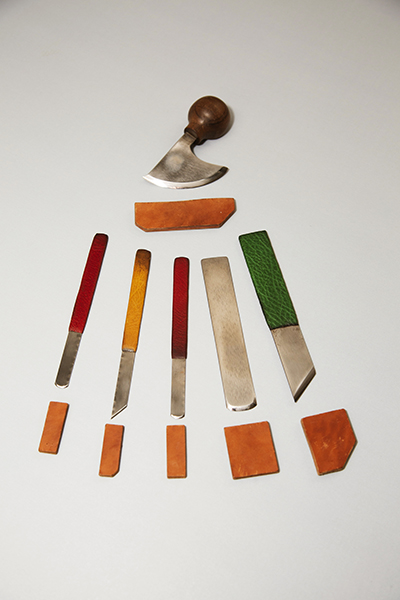
After a few weeks, he knew he’d found his field.
“It clicked right away, and I really enjoyed learning about and appreciating the mechanical structures that go into making a book work,” Smutz says.
Materials of thread, cloth, paper and leather form a simple machine, he explains. “When you open a book, the spine is acting as a lever to allow the book to open. When you’re trying to repair a book, you can see, ‘OK, it broke here because of this stress, so this is how I’ll repair it to compensate, so it won’t break that way again.’”
After graduation, Smutz worked as a conservation intern at the Smithsonian Institution Archives, earned a master’s degree in conservation from West Dean College in England, and served an internship at the Bodleian Libraries at the University of Oxford. In 2017, he returned to Smithsonian Libraries as the Adopt-a-Book conservator, leading conservation projects sponsored by donors. He came back to the Midwest and opened NS Conservation in 2019 after his wife, Sophie Barbisan, a paper conservator, landed a job at the Saint Louis Art Museum.
Among the projects that have crossed his bench are a Hebrew text from 1342 that was part of a digitization partnership between the Bodleian and the Vatican; a series of midcentury love letters between a St. Louis emigrant and his future wife back in Italy, brought in by the couple’s children; and a commemorative World War II map found in a flea market in France and presented to the daughter of the U.S. 83rd Infantry Division officer it originally belonged to. “This month alone, I have had 20th-century children’s books on my bench as well as a book from 1542,” Smutz says, “so it can be quite a range.”
While he does some projects for institutions, most are for private clients. These jobs produce some of the more joyful moments of his craft: the big reveal when a restored item is unveiled.
“They haven’t dealt with conservators before and they don’t know what’s possible, so there is generally more surprise, as well as excitement, because this book that’s been in a box for 40 years because everyone was afraid to handle it is back in working order,” Smutz says. “That’s one of my biggest things: Yes, I want it to look better than when it came to me, but most important is that it works so well they can actually use it. It really is great to help families use those heirlooms again.”
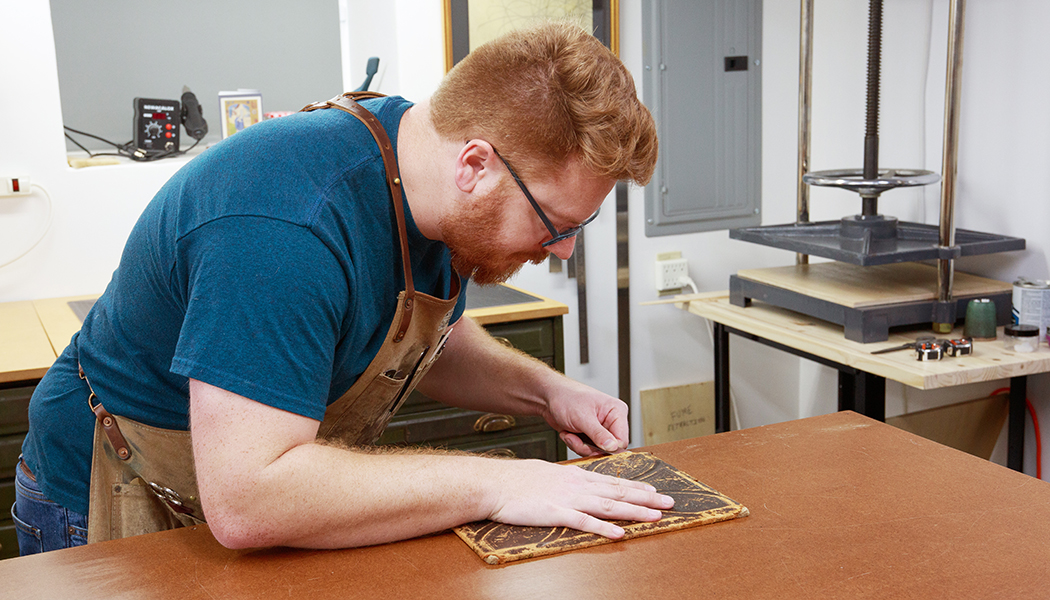
RELATED ARTICLES
/

